Shuguo Zheng Lab (Preventive Dentistry)
The first research direction of our team focuses on studying oral epidemiology and dental public health Research. Our department serves as the leading entity for the technical team of multiple national oral health epidemiological surveys. We are deeply involved in every aspect of these surveys, including protocol development, researcher training, fieldwork supervision, data analysis, and report preparation. we also investigate the key factors influencing public health issues in China, offering a scientific basis for devising national strategies for oral disease prevention and control. Relevant research findings have been published in a series of academic papers.
The second research direction focuses on studies of developing in-situ recognition, multi-dimensional and high-sensitivity detection methods for various biomolecules, oral microorganisms, and their metabolites in saliva based on photochemical and electrochemical sensing techniques, observing and regulating biological activities of salivary biomarkers using super-resolution fluorescence imaging nanoarrays and nano-microfluidic techniques, exploring bidirectional regulatory mechanisms and action patterns of nanomaterials for long-acting drug release or transmucosal targeted delivery of drugs for oral and systemic diseases to meet clinical needs of precise detection, dynamic surveillance and effective intervention of oral and systemic diseases.
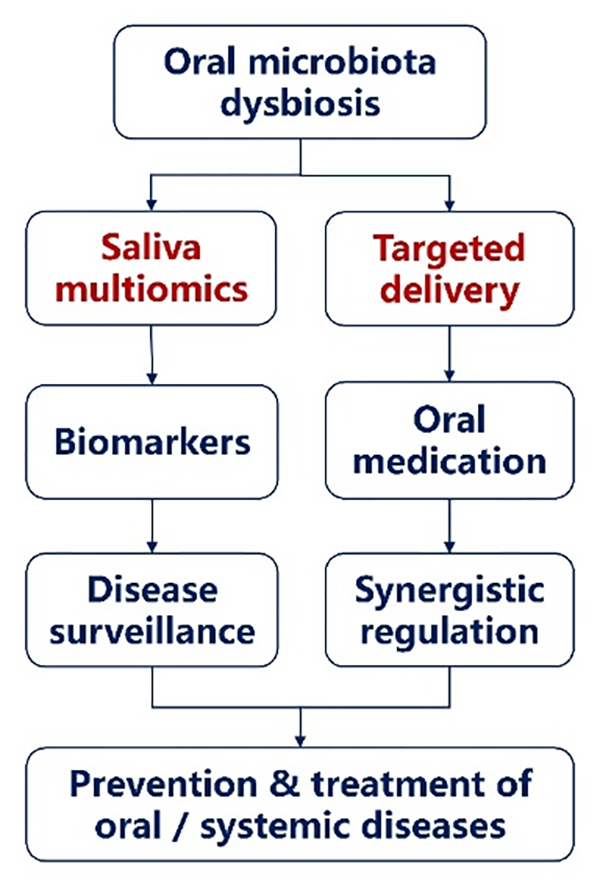
Fig 1. Precise diagnosis and treatment technology of oral micro-ecosystem
The third research direction focuses on elucidating the regulatory mechanisms underlying tooth development. Specifically, this investigation employs disease models such as cleidocranial dysplasia, amelogenesis imperfecta, and hypodontia to identify pathogenic genes associated with dental developmental anomalies. Corresponding genetically engineered animal models have been established to delineate the pathological mechanisms of these disorders. This systematic approach aims to identify potential therapeutic targets for clinical intervention while simultaneously advancing the fundamental understanding of physiological processes governing tooth morphogenesis and eruption. The integration of genetic analysis with functional validation is expected to provide novel insights into both pathological pathways and normal developmental biology of tooth.
DIRECTOR
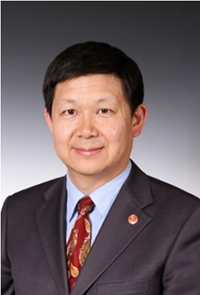
Shuguo Zheng, DDS, PhD
Professor
Principal Investigator
kqzsg86@bjmu.edu.cn
Dr. Zheng is the professor of dentistry in the Department of Preventive Dentistry at Peking University School of Stomatology (PKUSS). He graduated from PKUSS with DMD (1992) and Ph.D. & M.D. (1996). He is the vice-President of the Asian Academy of Preventive Dentistry (AAPD) and the co-director of the World Health Organization Collaborating Center (WHOCC) for the Research and Training in Preventive Dentistry in China. He is also the Chairman-elect of the Chinese Society of Preventive Dentistry, Chinese Stomatological Association. As the first complete person, he has won one international and three national science and technology awards. He has received National Academy of Clinical Biochemistry Distinguished Abstract Award in American Association for Clinical Chemistry Annual Meeting. He has received the Maternal and Child Health Science and Technology Award twice at 2021 and 2024 respectively and was the recipient of Chinese Society of Stomatology Science and Technology Award. He received over 23 national research grants and published over 100 papers as the first author or corresponding author in journals such as Protein & Cell, Journal of Dental Research. His main research areas are: oral biomarker study in oral and systemic diseases, dental public health study in China, molecular biological study for dental developmental abnormality.
RESEARCH AREAS
Oral Epidemiology and Dental Public Health Research
Our team are dedicated to exploring and analysing the oral disease burden, utilization of oral health services, economic impact of oral diseases, and health equity among the Chinese population. By leveraging the extensive datasets from national oral health surveys, we aim to understand the key factors influencing public health issues in China and provide a scientific basis for developing national strategies for oral disease prevention and control. Our research findings have been published in numerous academic papers.
Global Oral Public Health Research & Collaboration
As a core team of the WHO Collaborating Centre for Research and Training in Preventive Dentistry, we actively collaborate with the WHO headquarters and other centres worldwide on various global oral public health research projects. We have participated in significant global oral health research initiatives such as the WHO Best-buy interventions. Our team has also contributed to the development of key WHO documents in the field of oral health, including the "Global Oral Health Status Report," the "Global Oral Health Strategy and Action Plan," and the "Bangkok Declaration on Oral Health." Our work has made a substantial impact in advancing global oral public health.

Fig2. Some publications our team participated in or guided, including Global Oral Health Status Report, Reports on the 2nd, 3rd, and 4th National Oral Health Epidemiological Surveys
High-Precision Detection of Salivary Biomarkers and Oral Micro-ecosystem
The team utilised high-precision techniques (e.g. high-precision mass spectrometry and high-throughput next-generation sequencing, etc.) to detect proteomics/peptidomics, microbiomics and metagenomics structure of saliva in order to investigate salivary biomarkers for oral and systemic diseases and stability of oral micro-ecosystem under different circumstances, demonstrating prompt reaction of salivary microbiome and proteome/peptidome in response to external stimulation (drinking beverage) and internal stimulation (disequilibrium in disease including oral diseases such as dental caries and periodontal diseases, and systemic diseases such as diabetes and chronic kidney diseases). These findings have established standard protocols for saliva sampling in proteomics/peptidomics and microbiomics studies, exhibited changes in certain components of saliva which could serve as candidate biomarkers for screening and surveillance of health and diseases, and revealed important targets for delivery of nanoparticle drugs for treatment of oral and systemic diseases.
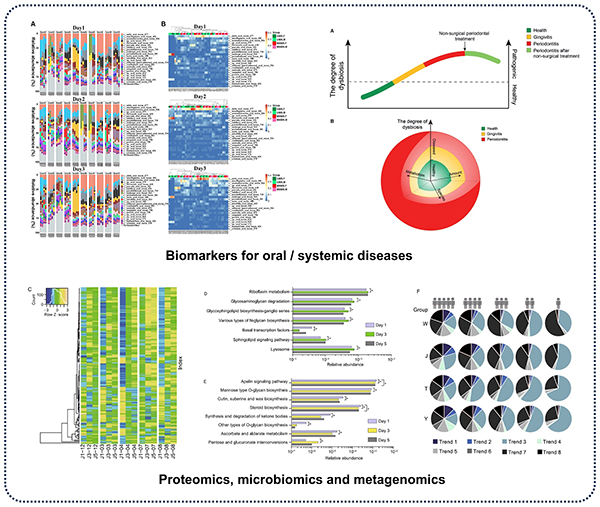
Fig 3. High-precision detection of salivary biomarkers and oral micro-ecosystem
Developmental Biology of Tooth
We utilized cleidocranial dysplasia (CCD), a model of permanent tooth eruption disorders, to investigate the molecular regulation of tooth eruption. Focusing on biological alterations in dental follicle and spatiotemporal bone remodeling, we identified that RUNX2, a master transcription factor in skeletal remodeling, orchestrates eruption dynamics by modulating site-specific osteogenic/osteoclastic differentiation around the dental germ. Mechanistically, RUNX2 achieves this through transcriptional regulation and epigenetic modifications, including RNA m6A modification and long non-coding RNA reprogramming, thereby shaping the eruption pathway and biomechanical forces required for tooth movement. Furthermore, we identified a critical role of cellular senescence in dental follicle cells as a triggering mechanism for eruption initiation. Notably, we elucidated an epigenetic regulatory axis involving histone lactylation modification that governs senescence-associated signaling cascades in the dental follicle. These discoveries provide novel insights into how chromatin-level metabolic-epigenetic crosstalk coordinates the spatial-temporal activation of eruption-related cellular programs.
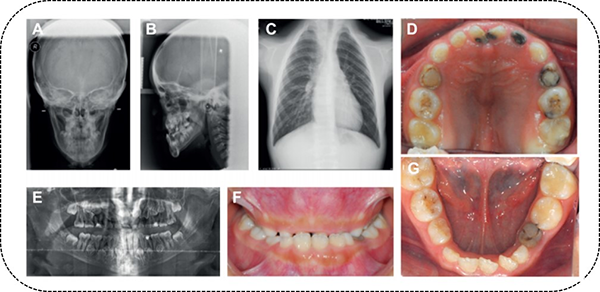
Fig 4. The clinical manifestation of a cleidocranial dysplasia patient. (A-C) Anteroposterior and lateral radiographs of the skull and chest radiograph of the proband. (D-G) Intraoral and panoramic radiograph of the proband

Fig 5. RUNX2 regulates osteoblast differentiation through RUNX2/CHRDL1/BMP4 axis. (A) Analysis of transcriptional effect of RUNX2 on the CHRDL1. (B) ChIP assay with antibodies directly against RUNX2 or IgG control. (C) CHRDL1 regulates recruitment of p-Smad1/5/9 to the nucleus
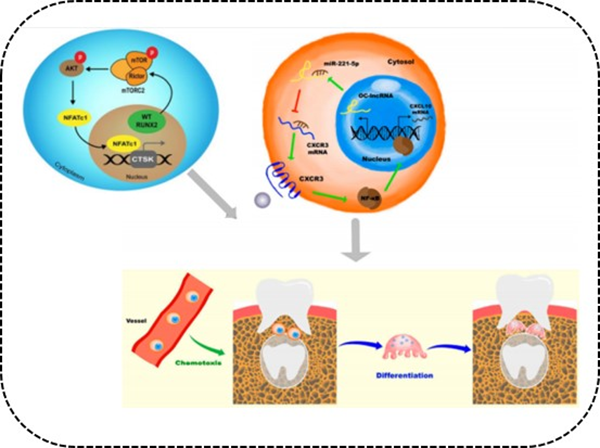
Fig 6. Schematic representation in the process of osteoclast differentiation during tooth eruption. (A) AKT/NFATc1/CTSK axis regulated by RUNX2. (B) OC-lncRNA sponges miR-221-5p to increase CXCR3 expression
RECENT PUBLICATIONS
Is oral microbiome of children able to maintain resistance and functional stability in response to short-term interference of ingesta?
Protein & Cell, June 2021
Costs of management of acute respiratory infections in older adults: A systematic review and meta-analysis.
Journal of Global Health, November 2022
RUNX2 regulates osteoblast differentiation via the BMP4 signaling pathway.
Journal of Dental Research, September 2022
Intraindividual variation and personal specificity of salivary microbiota.
Journal of Dental Research, August 2020
Clinical Response Characteristics of Salivary Proteins in the Management Strategy of Diabetes-Associated Periodontitis.
J Proteome Res, March, 2025
Cost of Respiratory Syncytial Virus-Associated Acute Lower Respiratory Infection Management in Young Children at the Regional and Global Level: A Systematic Review and Meta-Analysis.
The Journal of infectious diseases, October 2020
A Novel ncRNA mediates the delayed tooth eruption of cleidocranial dysplasia.
Cells, September 2022
Solitary Median Maxillary Central Incisor Syndrome: An Exploration of the Pathogenic Mechanism.
Front Genet, January 2022
In-vitro and in-vivo comparative studies of treatment effects on enamel demineralization during orthodontic therapy: implications for clinical early-intervention strategy.
Clinical Oral Investigations, September 2024
RUNX2 mutation inhibits the cellular senescence of dental follicle cells via ERK signaling pathway.
Oral Diseases, April 2024
Decomposing socioeconomic inequalities in dental caries among Chinese adults: findings from the 4th national oral health survey.
BMC Oral Health, January 2023
Potential roles of the free salivary microbiome dysbiosis in periodontal diseases.
Frontiers in Cellular and Infection Microbiology, September 2021
The stability of children's salivary peptidome profiles in response to short-term beverage consumption.
Clinica Chimica Acta, October 2020
Characterising salivary peptidome across diurnal dynamics and variations induced by sampling procedures.
Clinical Oral Investigations, January 2023
Abnormal differentiation of dental pulp cells in cleidocranial dysplasia.
Journal of Dental Research, April 2015
Do contextual factors have a role in periodontal disease?
J Clin Periodontol, January 2017.
Salivary peptidome profiling for diagnosis of severe childhood caries. J Transl Med, August, 2016
Socioeconomic-related inequality in dental care utilization among preschool children in China.
Community Dent Oral Epidemiol, December 2021
Income-related inequality and?decomposition of?edentulism among?aged people in?China.
BMC Oral Health, May 2022
Novel RUNX2 mutations in Chinese individuals with cleidocranial dysplasia.
Journal of Dental Research, September 2009
TEAM

CONTACT
Shuguo Zheng
kqzsg86@bjmu.edu.cn
+86-10-82195510
Peking University School and Hospital of Stomatology,
No.22 Zhongguancun South Avenue,
Haidian District, Beijing 100081, PR China
last text: Qin Team (Pediatric Dentistry)
next text: Wang Yuguang Lab






